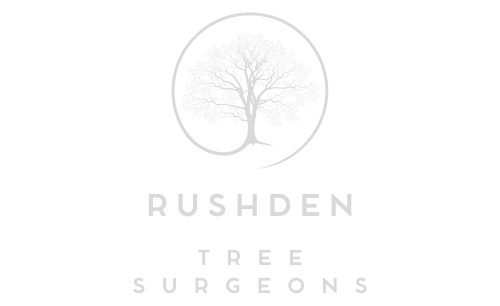Mitigating Risks: The Role of Tree Trimming in Tree Risk Management
Introduction: Trees are a beautiful and valuable asset to any property, but they also come with inherent risks, especially when left unmanaged. As responsible stewards of the environment, property owners need to prioritise tree risk management to ensure the safety of their surroundings. At Rushden Tree Surgeons, we understand the importance of proactive tree care in mitigating risks, and tree trimming plays a vital role in this process. In this blog post, we’ll explore how tree trimming contributes to tree risk management and helps protect your property and loved ones.
Identifying Potential Hazards:
Before embarking on any tree trimming activities, it’s crucial to thoroughly assess your property’s trees to identify potential hazards and risks. Signs of tree hazards may include:
- Dead or diseased branches.
- Cracks in the trunk.
- Leaning or overhanging limbs.
- Signs of decay or fungal growth.
Property owners can reduce the risk of accidents, property damage, and personal injury by identifying and addressing these potential hazards through tree trimming.
Reducing Likelihood of Failure:
One of the primary goals of tree trimming for risk management is to reduce the likelihood of tree failure, particularly during severe weather events such as storms or high winds. Trimming trees to remove dead, diseased, or structurally compromised branches helps improve the tree’s overall health and stability, reducing the risk of limb failure and tree collapse. Additionally, selective pruning techniques such as crown reduction and canopy thinning help to redistribute weight and reduce stress on weak or vulnerable branches.
Creating Clearance Zones:
If left unmanaged, trees near buildings, power lines, roads, and other structures pose additional risks. Tree trimming helps to create clearance zones around these structures, reducing the likelihood of damage in the event of falling branches or tree collapse. Property owners can minimise the risk of property damage, utility disruptions, and personal injury by strategically trimming trees to maintain safe distances from structures and utilities.
Promoting Long-Term Health and Vigor:
Regular tree trimming is essential for mitigating immediate risks and promoting trees’ long-term health and vigour. By removing deadwood, reducing canopy density, and correcting structural defects, tree trimming stimulates new growth, improves air circulation, and enhances the tree’s ability to withstand environmental stressors. Healthy, well-maintained trees are more resilient to pests, diseases, and weather-related damage, reducing the overall risk to your property and surrounding environment.
Consulting with Certified Arborists:
Regarding tree risk management and trimming, it’s essential to consult with certified arborists with the knowledge, skills, and expertise to assess tree health and implement effective trimming strategies. Certified arborists can conduct thorough tree risk assessments, identify potential hazards, and develop customised trimming plans tailored to your property’s needs. By working with experienced professionals, property owners can ensure tree-trimming activities are conducted safely, efficiently, and by industry best practices.
Conclusion: Tree trimming plays a crucial role in tree risk management by identifying and mitigating potential hazards, reducing the likelihood of tree failure, creating clearance zones around structures, and promoting long-term tree health and vigour. Property owners can effectively manage risks and protect their property, loved ones, and the surrounding environment by investing in proactive tree care and consulting with certified arborists.
Call us on: 01933 422 068
Click here to find out more about Rushden Tree Surgeons
Click here to complete our contact form and see how we can help with your tree’s needs.

